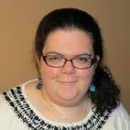- A
- A
- A

Reality Shows Need a Little More Diversity
I watch The Little Couple on TLC like it’s my job. I once hung out with Matt Roloff from Little People, Big World in his green room so I could interview him before he did a presentation at my college. I’m all about featuring people who are actually disabled in the media. And for the most part, I believe TLC does justice to the disability experience. The problem, though, is that little people seem to be the only disabled people routinely shown on television, especially reality shows, with very few exceptions.
Proving my point is the fact that in February, yet another show about a family with dwarfism, Our Little Family, premiered on TLC. The show features the Hamills, a lovely family who all have the same type of genetic dwarfism called achondroplasia. Certainly, their story is unique in that it’s rare for an entire family to be disabled, let alone to have the same disability. As such, this makes them ideal for the human-interest aspect TLC is trying to capture.
I can’t help but wonder, though, why mainstream media almost completely neglects featuring people with other kinds of disabilities as the focus of reality shows. What about people like me? What about people like my family? Why don’t I ever see myself, a wheelchair user, reflected on the television screen? Is it perhaps because there are standards that deem people “too disabled” to be acceptable for the mainstream?
Granted, many advocates argue these types of shows shouldn’t exist even in the first place, because they serve as an invitation for voyeurism – a way for people to gawk uninhibited in the privacy of their own home. That being said, I think shows like The Little Couple and Our Little Family are also a form of education through entertainment. They show that little people are just living their lives like everyone else, with all the ups, downs, and challenges along the way.
My family would easily fit this TV storytelling formula: “Disabled people – they’re just like us! Except not entirely because they’re disabled!” Our story is just as unique as the lives of little people on TLC reality shows, while also being equally as average. My mom and I both have Larsen syndrome, a genetic physical disability. My dad is able-bodied. (Side note: I’m not gunning for a show. Just making my case.) Like the families on TLC, we deal with things non-disabled people don’t have to deal with, but our day-to-day lives aren’t particularly earth-shattering. So, if the media insists on featuring people with bodily diversity doing things like going to the beach, going to school, going to the grocery store, and just generally living their daily lives, why not actually represent true bodily diversity?
If you’re really up on your reality show trivia, you might say “but you had Push Girls!“Push Girls was a show on The Sundance Channel about women who use wheelchair. That show had its merits and on the whole, I was glad to see a reality show about wheelchair users. I actually enjoyed watching it most of the time. Yet, the more I reflect on the show, I find myself disappointed by the fact that Push Girls was far from realistic is so many ways. All of the raw moments revealing what life can be like with a disability – the need for personal care attendants, the adventures of having sex, trying to cram several wheelchairs into one car – were practically overridden by the fact that the Push Girls were professional models and Hollywood high-rollers.
Now, there’s nothing wrong with that. The issue is that it’s not my reality, and it sure as hell isn’t the reality of the majority of wheelchair users I know. At least TLC gets credit because their shows about the lives of little people tend to keep it real.
But the media, especially TLC, continues to miss golden opportunities to expand on the diverse stories they share. If done well, such as in the way The Little Couple is presented, reality shows have the potential to become an easily accessible platform for society to gain insight into the nuances and complexities of disability while simultaneously quelling stigma and stereotypes.
The realities of the disability community go so much deeper than what can be seen on the current TV line-up. Some of us are in interability relationships, or interracial, or interreligious. Some of us go solo. We live in every country; we speak every language. We are every race, ethnicity, nationality, sexuality, religion, and ability-level there is. We are the world’s largest minority. Our families and relationships are as rich in diversity as everyone else’s in this world, and accurate portrayals deserve their rightful place among the media.
Emily Ladau is a writer and disability rights activist whose passion is to harness the powers of language and social media as tools for people to become informed and engaged social justice advocates. She maintains a blog, Words I Wheel By, as a platform to address discrimination and to encourage people to understand the experience of having a disability in more positive, accepting, and supportive ways. You’re welcome to connect with her on Facebook and Twitter.